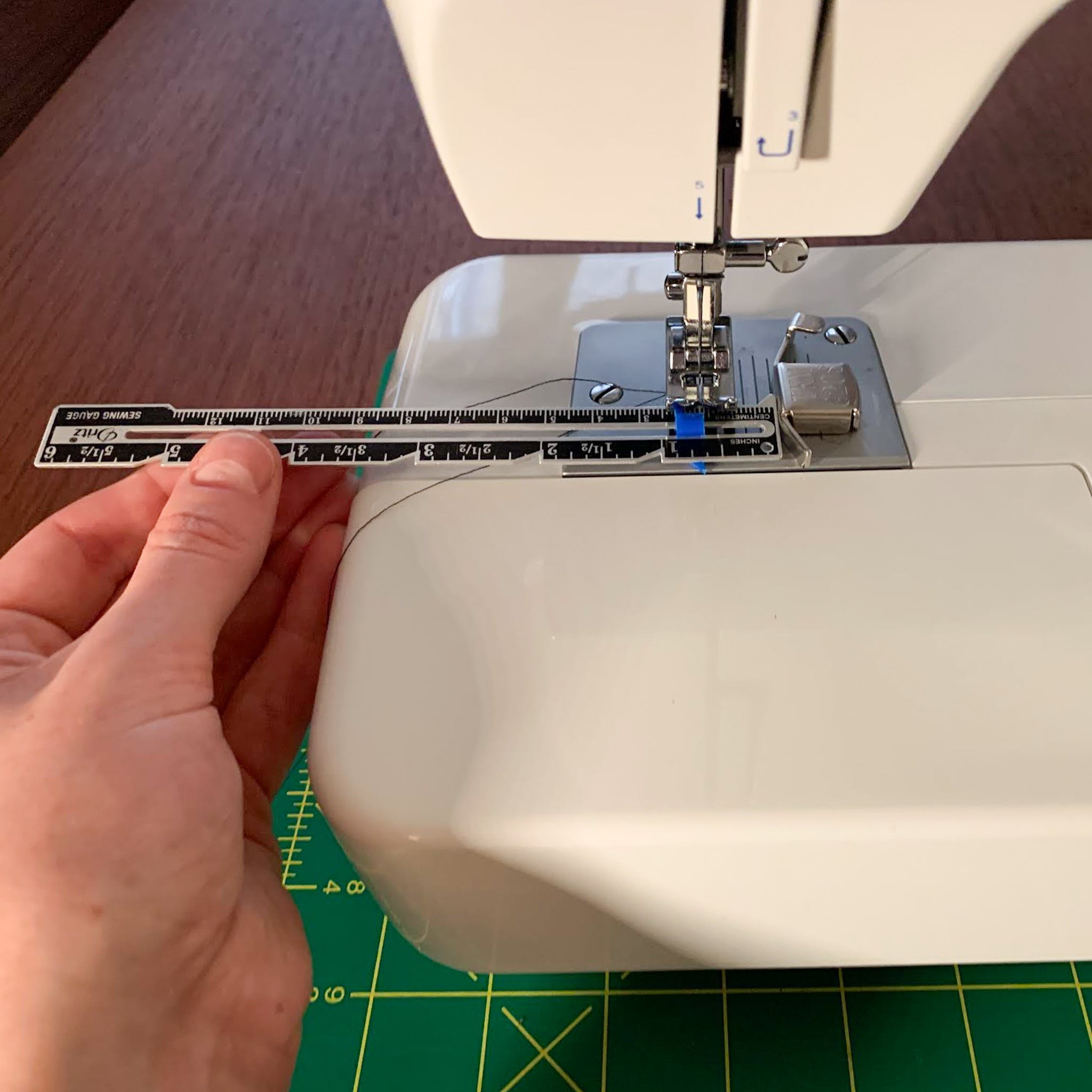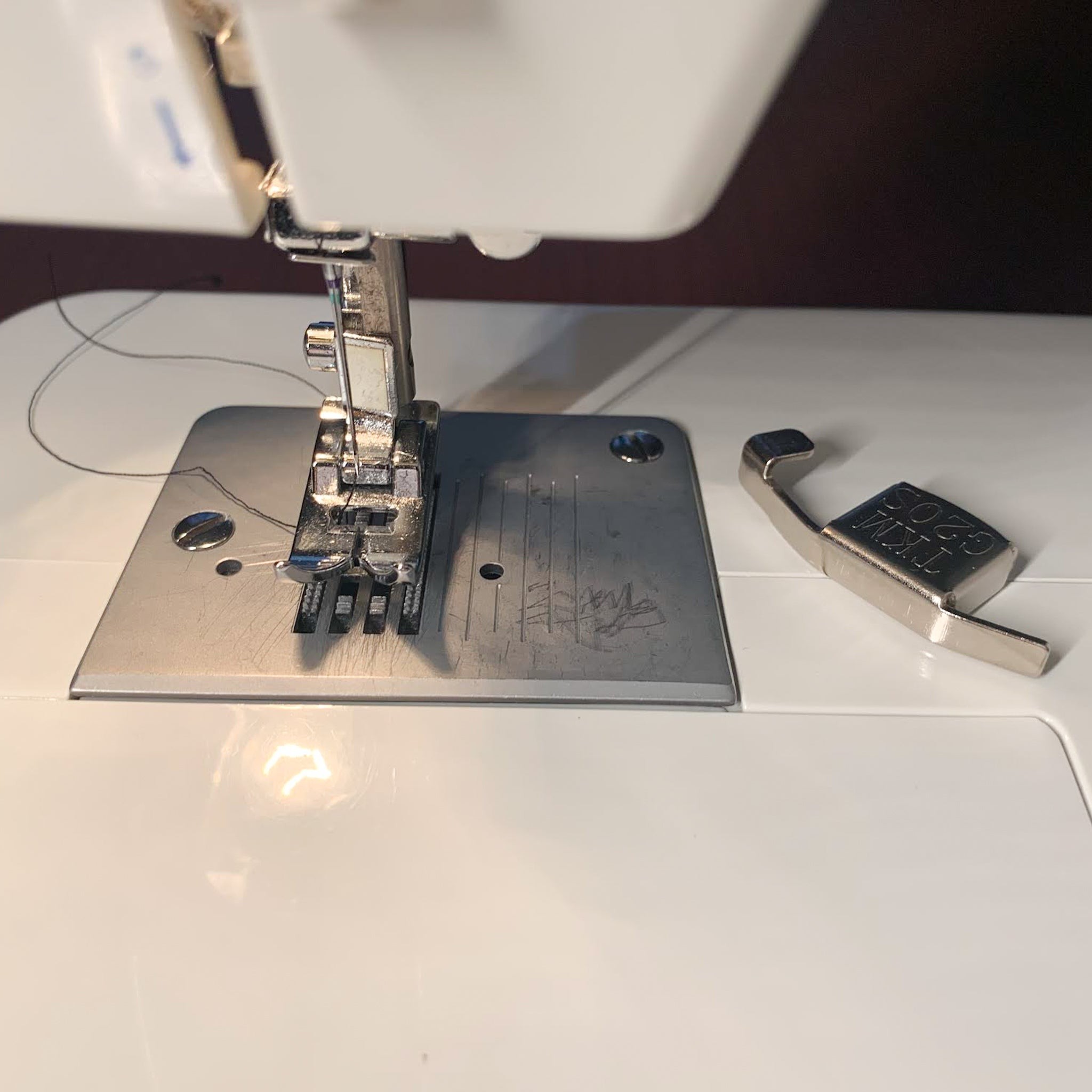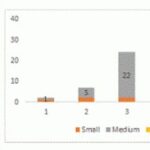Using a magnetic seam guide simplifies sewing, ensuring consistent seam allowances and professional results. CONDUCT.EDU.VN provides detailed guidance on employing this tool effectively, saving time and enhancing precision. Explore seam guidelines, sewing aids and precise stitching techniques for successful sewing projects.
1. Understanding the Magnetic Seam Guide
A magnetic seam guide is a small, but mighty tool that attaches to the metal throat plate of your sewing machine. Its purpose is to act as a physical barrier, guiding the edge of your fabric as you sew. This ensures that your seam allowance remains consistent, leading to more accurate and professional-looking results. Whether you’re a beginner or an experienced seamstress, understanding How To Use A Magnetic Seam Guide can significantly improve your sewing projects.
1.1. What is a Magnetic Seam Guide?
A magnetic seam guide is a simple device that uses a magnet to adhere to the metal surface of your sewing machine’s throat plate. It provides a straight edge for you to guide your fabric against, ensuring consistent seam widths. This tool is particularly useful for sewing long, straight seams, as well as for maintaining accuracy when working with tricky fabrics.
1.2. Benefits of Using a Magnetic Seam Guide
- Improved Accuracy: Achieve consistent seam allowances for professional results.
- Increased Speed: Sew faster without constantly checking your seam allowance.
- Reduced Errors: Minimize mistakes by providing a reliable guide for your fabric.
- Versatility: Suitable for various sewing projects and fabric types.
- Ease of Use: Simple to attach, adjust, and remove as needed.
1.3. Types of Magnetic Seam Guides Available
There are various types of magnetic seam guides available, each with its own unique features and benefits.
- Standard Magnetic Seam Guide: A simple, rectangular magnet that attaches to your sewing machine.
- Adjustable Magnetic Seam Guide: Allows you to adjust the width of the seam allowance.
- Multi-Purpose Magnetic Seam Guide: Offers multiple edges and angles for different sewing tasks.
2. Setting Up Your Sewing Machine for Magnetic Seam Guide
Before you start sewing with a magnetic seam guide, it’s important to set up your sewing machine properly. This includes ensuring that your machine is clean, the correct needle is installed, and the appropriate settings are selected.
2.1. Cleaning Your Sewing Machine
A clean sewing machine operates more smoothly and efficiently. Dust, lint, and thread buildup can interfere with the machine’s performance, leading to uneven stitches and potential damage. Before attaching the magnetic seam guide, use a small brush to clean the feed dogs, bobbin area, and any other accessible parts of the machine.
2.2. Selecting the Right Needle
Choosing the right needle is crucial for achieving the best results with your fabric. Different fabrics require different types and sizes of needles. For example, lightweight fabrics like silk and chiffon require a fine needle, while heavier fabrics like denim and canvas need a stronger needle. Refer to your sewing machine manual or a needle guide for recommendations based on your specific fabric.
2.3. Choosing the Correct Thread
The type of thread you use can also impact the quality of your seams. Select a thread that is appropriate for your fabric in terms of weight and fiber content. Cotton thread is a good all-purpose choice for many projects, while polyester thread is stronger and more durable for heavier fabrics. Always test your thread and needle combination on a scrap of fabric before starting your project.
2.4. Adjusting Stitch Settings
Adjusting your sewing machine’s stitch settings is another important step in preparing for sewing with a magnetic seam guide. Set the stitch length and width according to your fabric and project requirements. A shorter stitch length is generally recommended for lightweight fabrics, while a longer stitch length is suitable for heavier fabrics.
3. How to Attach a Magnetic Seam Guide
Attaching a magnetic seam guide is a straightforward process. Follow these steps to ensure that it is properly positioned and secured.
3.1. Identifying the Throat Plate
The throat plate, also known as the needle plate, is the flat metal plate located directly beneath the needle and presser foot. It has a hole or slot for the needle to pass through and often features markings that indicate seam allowances.
3.2. Positioning the Magnetic Seam Guide
Determine the desired seam allowance for your project. Use the markings on the throat plate or a seam gauge to measure the correct distance from the needle. Place the magnetic seam guide along this line, ensuring that it is parallel to the edge of the throat plate.
3.3. Securing the Magnetic Seam Guide
Once you have positioned the magnetic seam guide, gently press it onto the throat plate. The magnet should hold it securely in place. Test the placement by running a scrap of fabric along the guide to ensure that it maintains the desired seam allowance.
3.4. Adjusting the Position if Necessary
If the seam allowance is not accurate, lift the magnetic seam guide and reposition it as needed. Use a seam gauge or ruler to double-check the distance from the needle. Once you are satisfied with the placement, press the guide firmly onto the throat plate again.
4. Sewing Techniques with a Magnetic Seam Guide
Using a magnetic seam guide can significantly improve your sewing accuracy and efficiency. Here are some techniques to help you make the most of this tool.
4.1. Guiding Fabric Along the Seam Guide
As you sew, gently guide the edge of your fabric along the magnetic seam guide. Maintain a consistent pressure to ensure that the fabric stays in contact with the guide. Avoid pushing or pulling the fabric, as this can cause uneven stitches.
4.2. Maintaining Consistent Pressure
Maintaining consistent pressure on the fabric is essential for achieving a straight, even seam. Use both hands to guide the fabric, keeping your fingers close to the seam guide. Avoid letting the fabric bunch up or drift away from the guide.
4.3. Sewing Curves and Corners
While magnetic seam guides are most effective for straight seams, they can also be used for curves and corners. For curves, slow down and gently pivot the fabric along the guide. For corners, stop with the needle down, lift the presser foot, pivot the fabric, and continue sewing.
4.4. Dealing with Thick or Bulky Fabrics
When working with thick or bulky fabrics, you may need to adjust the pressure of the presser foot. Increase the pressure to ensure that the fabric feeds evenly through the machine. You may also need to use a walking foot to prevent the layers of fabric from shifting.
5. Troubleshooting Common Issues
Even with a magnetic seam guide, you may encounter some common sewing issues. Here are some troubleshooting tips to help you resolve them.
5.1. Fabric Slipping or Shifting
If your fabric is slipping or shifting while you sew, try using a walking foot or applying a layer of spray starch to the fabric before cutting. You can also use pins or clips to hold the fabric layers together.
5.2. Uneven Stitches
Uneven stitches can be caused by a variety of factors, including incorrect needle or thread selection, improper tension settings, or a dirty sewing machine. Check your needle and thread, adjust the tension, and clean your machine to resolve this issue.
5.3. Magnetic Seam Guide Moving
If your magnetic seam guide is moving while you sew, make sure that it is securely attached to the throat plate. Clean the throat plate to remove any dust or debris that may be interfering with the magnet’s grip. If the magnet is weak, consider replacing the seam guide.
5.4. Scratches on the Throat Plate
Sliding the magnetic seam guide around to reposition it can scratch the throat plate of your sewing machine. To avoid this, lift the guide off the machine before moving it. Consider placing a thin piece of felt or fabric between the guide and the throat plate to protect the surface.
6. Advanced Techniques and Tips
Once you’ve mastered the basics of using a magnetic seam guide, you can explore some advanced techniques to further enhance your sewing skills.
6.1. Using Multiple Seam Guides
For complex projects that require multiple seam allowances, consider using multiple magnetic seam guides. This can help you maintain accuracy and consistency throughout the project.
6.2. Combining with Other Sewing Tools
Magnetic seam guides can be used in conjunction with other sewing tools, such as seam rippers, rotary cutters, and cutting mats, to improve your overall sewing efficiency.
6.3. Customizing Your Seam Guide
You can customize your magnetic seam guide to suit your specific needs. For example, you can add a layer of non-slip material to the bottom of the guide to prevent it from moving, or you can attach a small ruler to the side of the guide for quick measurements.
6.4. Adapting for Different Projects
Adapt your techniques for different projects. For quilting, use the guide for precise piecing. For garment sewing, ensure accurate seam allowances for a professional fit.
7. Maintaining Your Magnetic Seam Guide
Proper maintenance will ensure that your magnetic seam guide lasts for years. Clean it regularly and store it properly.
7.1. Cleaning the Seam Guide
Clean your magnetic seam guide regularly to remove any dust, lint, or debris that may be clinging to it. Use a soft cloth or brush to wipe the surface of the guide. Avoid using harsh chemicals or abrasive cleaners, as these can damage the magnet or the guide’s surface.
7.2. Storing the Seam Guide
When not in use, store your magnetic seam guide in a safe place where it will not be damaged or lost. A small box or pouch is ideal for keeping it protected. Avoid storing it near other magnetic items, as this can weaken the magnet over time.
7.3. Checking the Magnet’s Strength
Periodically check the strength of the magnet to ensure that it is still holding the guide securely in place. If the magnet is weak, consider replacing the seam guide.
7.4. Protecting from Damage
Protect your magnetic seam guide from physical damage. Avoid dropping it or exposing it to extreme temperatures or humidity. Store it in a dry place to prevent rust and corrosion.
8. Magnetic Seam Guide vs. Other Seam Guides
While magnetic seam guides are popular, other types of seam guides are available. Each has its own pros and cons.
8.1. Comparison Table
| Type of Seam Guide | Pros | Cons |
|---|---|---|
| Magnetic Seam Guide | Easy to use, adjustable, versatile | Can scratch throat plate, may move if not secure |
| Adjustable Seam Guide | Precise adjustments, stable | More expensive, can be bulky |
| Laser Seam Guide | Highly accurate, hands-free | Requires power, may not work well with all fabrics |
| Fabric Seam Guide | Inexpensive, easy to replace | Less precise, wears out quickly |
8.2. When to Choose a Magnetic Seam Guide
Choose a magnetic seam guide if you value ease of use, adjustability, and versatility. It’s a great option for both beginners and experienced sewers who want a simple, reliable tool for maintaining consistent seam allowances.
8.3. Alternatives for Specific Projects
Consider alternatives for specific projects. For example, an adjustable seam guide might be better for projects requiring very precise seam allowances. A laser seam guide could be ideal for large quilting projects.
9. The Science Behind Magnetic Seam Guides
Understanding the science behind magnetic seam guides can help you appreciate their effectiveness and limitations.
9.1. How Magnets Work
Magnets work by creating a magnetic field that attracts certain materials, such as iron and steel. The magnetic field is generated by the alignment of electrons within the magnet’s atoms.
9.2. The Strength of Magnets
The strength of a magnet is determined by the material it is made from and its size and shape. Stronger magnets are able to exert a greater force of attraction.
9.3. Magnetic Fields and Sewing Machines
The magnetic field of a magnetic seam guide is strong enough to hold it securely in place on the throat plate of a sewing machine, but it is not strong enough to damage the machine’s internal components.
9.4. Debunking Myths About Magnets
Despite concerns floating around crafty spaces on the internet, the tiny magnet on the underside of the seam guide isn’t strong enough to cause any issues for modern machines with LCD or OLED display screens. For reassurance, check out a demo showing someone placing magnets on some pricey computerized sewing machines, with no ill effect. If you’re unsure, refer to the user manual for your sewing machine, or contact the manufacturer before using your seam guide.
10. Magnetic Seam Guides and Quilting
Magnetic seam guides are especially useful for quilting, where accuracy is paramount.
10.1. Achieving Accurate Piecing
Accurate piecing is essential for creating beautiful quilts. A magnetic seam guide can help you achieve consistent seam allowances, ensuring that your quilt blocks fit together perfectly.
10.2. Using Seam Guides for Binding
Seam guides are also useful for binding quilts. By maintaining a consistent seam allowance, you can create a professional-looking binding that lies flat and even.
10.3. Tips for Quilting with a Seam Guide
- Use a quarter-inch seam guide for traditional quilting projects.
- Adjust the position of the guide as needed for different seam allowances.
- Use multiple seam guides for complex quilt blocks.
10.4. Common Quilting Mistakes and How to Avoid Them
Common quilting mistakes include inconsistent seam allowances, misaligned blocks, and uneven binding. Using a magnetic seam guide can help you avoid these mistakes and create beautiful, professional-looking quilts.
11. Magnetic Seam Guides and Garment Sewing
Magnetic seam guides are equally valuable for garment sewing, ensuring accurate seams and professional finishes.
11.1. Ensuring Accurate Seam Allowances
Accurate seam allowances are crucial for achieving a well-fitting garment. A magnetic seam guide can help you maintain consistent seam allowances, ensuring that your garment fits properly and looks professional.
11.2. Sewing Difficult Fabrics
Magnetic seam guides are particularly helpful for sewing difficult fabrics, such as silk, chiffon, and knits. These fabrics tend to slip and shift easily, making it challenging to maintain a consistent seam allowance. A magnetic seam guide provides a stable guide for your fabric, helping you create accurate seams.
11.3. Tips for Garment Sewing with a Seam Guide
- Use a smaller seam allowance for lightweight fabrics.
- Use a larger seam allowance for heavier fabrics.
- Adjust the position of the guide as needed for different seam allowances.
11.4. Achieving Professional Finishes
Professional finishes, such as clean seams and even hems, are essential for creating high-quality garments. A magnetic seam guide can help you achieve these finishes by ensuring that your seams are accurate and consistent.
12. Where to Buy Magnetic Seam Guides
Magnetic seam guides are widely available at sewing supply stores and online retailers.
12.1. Online Retailers
Online retailers, such as Amazon, Etsy, and eBay, offer a wide variety of magnetic seam guides at competitive prices.
12.2. Local Sewing Supply Stores
Local sewing supply stores are a great place to find magnetic seam guides and other sewing tools. The staff can offer expert advice and help you choose the right guide for your needs.
12.3. Factors to Consider When Purchasing
When purchasing a magnetic seam guide, consider the following factors:
- Magnet Strength: Choose a guide with a strong magnet that will hold it securely in place.
- Size and Shape: Select a guide that is appropriate for your sewing machine and project requirements.
- Adjustability: Consider an adjustable guide if you need to sew different seam allowances.
- Price: Compare prices from different retailers to find the best deal.
12.4. Recommended Brands
Some recommended brands of magnetic seam guides include:
- Wilikiki
- Creative Grids
- Dritz
13. The Future of Sewing Technology
Sewing technology is constantly evolving, with new tools and techniques being developed all the time.
13.1. Innovations in Seam Guides
Innovations in seam guides include laser seam guides, adjustable seam guides, and computerized seam guides. These tools offer greater accuracy and efficiency than traditional seam guides.
13.2. The Role of Technology in Sewing Education
Technology is also playing an increasing role in sewing education. Online tutorials, virtual sewing classes, and interactive sewing patterns are making it easier than ever to learn how to sew.
13.3. Predictions for the Future of Sewing
Predictions for the future of sewing include increased automation, greater use of 3D printing, and more sustainable sewing practices. These trends will likely transform the way we sew and create garments.
13.4. How to Stay Updated with New Trends
Stay updated with new trends in sewing technology by attending sewing conferences, reading sewing blogs, and following sewing experts on social media.
14. Ethical Considerations in Sewing and Fashion
Ethical considerations are becoming increasingly important in the sewing and fashion industries.
14.1. Sustainable Sewing Practices
Sustainable sewing practices include using eco-friendly fabrics, reducing waste, and supporting fair labor practices.
14.2. Fair Labor Standards
Fair labor standards ensure that garment workers are paid fair wages, work in safe conditions, and are not subjected to exploitation.
14.3. Reducing Textile Waste
Reducing textile waste is essential for protecting the environment. You can reduce waste by repurposing old fabrics, donating unwanted clothing, and avoiding fast fashion.
14.4. Supporting Ethical Brands
Support ethical brands that are committed to sustainable and fair labor practices. Look for certifications such as Fair Trade and GOTS (Global Organic Textile Standard).
15. Frequently Asked Questions (FAQs)
15.1. What is a magnetic seam guide?
A magnetic seam guide is a tool used in sewing to help maintain a consistent seam allowance. It attaches to the metal plate of your sewing machine using a magnet and acts as a guide for the fabric edge.
15.2. How do I attach a magnetic seam guide?
To attach a magnetic seam guide, position it on the metal throat plate of your sewing machine at the desired seam allowance distance from the needle and let the magnet secure it in place.
15.3. Can a magnetic seam guide damage my sewing machine?
No, the magnets used in seam guides are not strong enough to damage modern computerized sewing machines. However, avoid sliding the guide to prevent scratches on the throat plate.
15.4. What are the benefits of using a magnetic seam guide?
Benefits include improved accuracy, increased sewing speed, reduced errors, and versatility for various sewing projects.
15.5. Can I use a magnetic seam guide for quilting?
Yes, magnetic seam guides are very useful for quilting, helping to achieve accurate piecing and consistent seam allowances.
15.6. What types of fabrics work best with a magnetic seam guide?
Magnetic seam guides work well with most fabrics, but are particularly helpful for slippery or difficult-to-manage materials like silk and chiffon.
15.7. How do I clean my magnetic seam guide?
Clean your magnetic seam guide with a soft, dry cloth to remove dust and lint. Avoid using harsh chemicals or abrasive cleaners.
15.8. Where can I buy a magnetic seam guide?
Magnetic seam guides can be purchased at sewing supply stores, online retailers like Amazon and Etsy, and from sewing machine dealers.
15.9. How do I adjust a magnetic seam guide?
Some magnetic seam guides are adjustable. To adjust, simply lift the guide, reposition it to the desired seam allowance, and let the magnet secure it in the new position.
15.10. Are there alternative seam guides to magnetic ones?
Yes, alternatives include adjustable seam guides, laser seam guides, and fabric seam guides, each with its own pros and cons.
16. Resources and Further Reading
For more information on sewing and magnetic seam guides, check out these resources.
16.1. Sewing Blogs and Websites
- CONDUCT.EDU.VN: Offers comprehensive guides and ethical standards in various fields.
- Colette Patterns: Provides sewing tutorials and pattern reviews.
- Seamwork Magazine: Features sewing patterns and articles on sewing techniques.
16.2. Sewing Books
- “The Sewing Book” by Alison Smith: A comprehensive guide to sewing techniques.
- “Sewing for Dummies” by Jan Saunders Maresh: A beginner-friendly introduction to sewing.
- “The Reader’s Digest Complete Guide to Sewing”: A classic reference book for all sewing enthusiasts.
16.3. Sewing Organizations and Associations
- American Sewing Guild: A community of sewing enthusiasts that offers classes, workshops, and events.
- Association of Sewing and Design Professionals: A professional organization for sewing and design professionals.
- Textile Arts Center: A non-profit organization that offers classes and workshops in various textile arts.
16.4. Online Sewing Communities
- Craftsy: An online learning platform that offers sewing classes and workshops.
- Pattern Review: A website where sewers can share their sewing projects and reviews.
- Reddit Sewing Community: A community of sewers that shares tips, advice, and inspiration.
By following these guidelines and resources, you can master the art of using a magnetic seam guide and elevate your sewing projects to new heights. Remember, consistent practice and attention to detail are key to achieving professional-looking results.
Magnetic seam guides are invaluable tools for achieving precision and efficiency in sewing. By understanding their benefits, proper usage, and maintenance, sewers of all skill levels can enhance their projects.
Need more detailed guidance and ethical standards for your projects? Visit conduct.edu.vn at 100 Ethics Plaza, Guideline City, CA 90210, United States, or contact us via Whatsapp at +1 (707) 555-1234.



